
South Sudan stands on the brink of disaster - with famine declared in two regions and thousands fleeing their homes in search of safety and food. Images of desperation in the world's newest nation have filled newspaper pages and flooded screens in recent weeks - but what is the situation really like on the ground?
As an editor at Tearfund, an international aid and development charity, I have the challenge and privilege of seeing first hand how initiatives like the recent East Africa Crisis Appeal have an impact in countries like South Sudan. In the nine months I've worked in the aid sector I've seen horrendously difficult situations in the countries we work in. But nothing could prepare me for visiting South Sudan.

Tearfund staff member David Garang measures a child's upper arm for malnutrition at Maar feeding centre. Photo: Tom Price
I've just returned from the country, where I met with people who were severely malnourished and families who had travelled for hundreds of miles clinging to lorries to escape fighting, or walked barefoot for days to camps for Internally Displaced People (IDPs).
It was - and still is - hard to process mentally and emotionally. Maybe it was because I was focussing so hard on capturing these stories so I couldn't fully engage with what I was witnessing. But to look into the eyes of a person who tells you 'All I'm eating is grass from the ground' is a moment I can't erase from my mind.
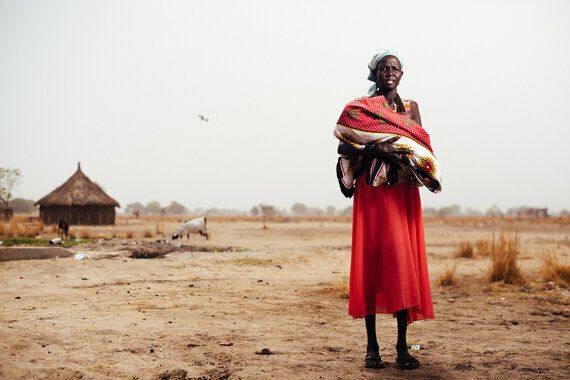
Mary at Wangulei feeding centre with her baby. Photo: Tom Price
Many of the people I met had been forced to leave their homes because of conflict. It is unimaginable to think about suddenly having to flee your community and travel for days without a single possession only to arrive at your destination and have to find somewhere to live. Most of us can't even last a day without our contactless debit card.
I visited emergency food distribution centres to document the life-saving work being carried out. One story that still lingers vividly in my memory is that of a 30-year-old mother I met in a place called Twic East, north of Juba. Her name was Mary and she was with her five-month-old child. She was malnourished and her upper arm measured just 21cm in circumference. She couldn't even lift a bucket of water and had to ask someone to put it on her head for her. She kept showing me how thin her arms were. I'll never forget just how fragile they looked.
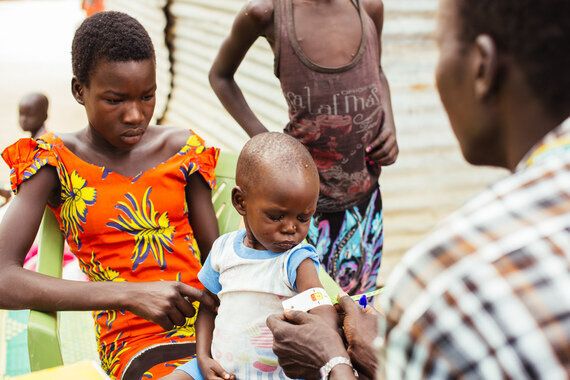
Jacob, 2, is on the borderline between moderate and severely malnourished so is given packets of peanut paste at a feeding centre in Panyangor. Abandoned by his mother, he was taken to the centre by his 15-year-old aunt, Ahok. Photo: Tom Price
Instead of looking at the translator, Mary stared me straight in the eyes when answering my questions. Her passion to communicate her story was compelling. Eye contact is so powerful, even if you don't speak the same language. Our shared humanity is something I'm still processing.
Having returned to London in the past few days it seems strange to witness conversations about how effective aid really is in helping people like Mary. The disconnect between the need and the cynicism seems vast. And the contrast in daily lived experience is something I am trying to come to terms with.

Ayen, 49, holds her one and a half-year-old child, Kuol, at the feeding centre in Panyangor. Thanks to the stabilising work of the feeding centre, Kuol is no longer malnourished. Photo: Tom Price
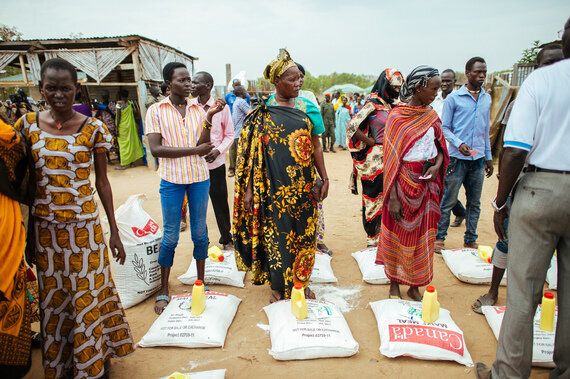
Community members from the Mangateen informal IDP camp in Juba pick up sacks of maize flour, oil, beans and salt at a food distribution run by Tearfund partner African Inland Church (AIC). Photo: Tom Price
Yesterday at the supermarket I was asked by the woman at the till if I'd found all I was looking for. To think of the vast choice of food available compared to what I had witnessed in South Sudan was unbearable. I choked up a little.
Many people worry that when they give to big appeals they don't know whether or not the money actually helps. But on our visits to several feeding centres workers spoke movingly of the daily progress they are making in discharging children and new mothers after they have received food assistance.
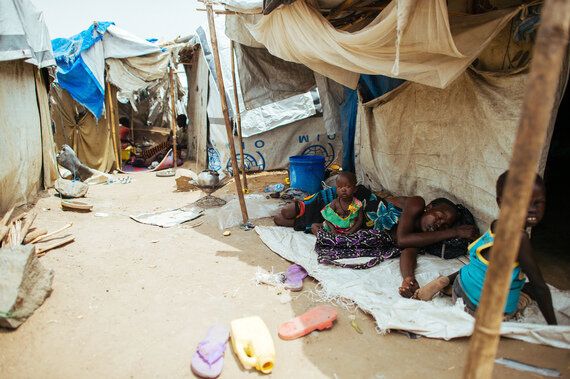
A woman and her children rest from the midday heat at Konyo Konyo IDP camp in Juba. Photo: Tom Price
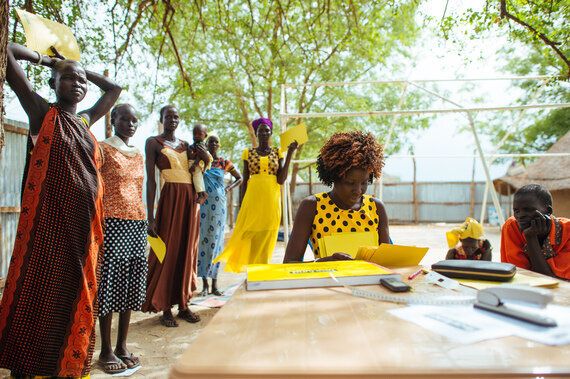
Achiik Makuol, 23, a Tearfund staff member, reads through the notes of the waiting pregnant and breastfeeding mothers visiting the Panyangor feeding centre. Achiik is also pregnant. Photo: Tom Price
Tearfund works with people already on the ground, through partner organisations. They are able to form close relationships with local people - they know their needs, they see their progress, they foster community. They are people who are standing side by side with those who most need help - from the physical, to the emotional, to the spiritual.
To see a tiny malnourished baby recover after six weeks at a feeding programme is so powerful. But to know that this work helps people to reach their full potential is what really motivates me.
